Configure Elastic Stack¶
For an overview of Elastic Stack and its components used with PLOSSYS 5, refer to Elastic Stack
In Elasticsearch, an index is used for log messages of PLOSSYS 5 and another index is used for the statistics messages of PLOSSYS 5.
Configure the Housekeeping of the Messages (Index Lifecycle Management, ILM)¶
For the messages, you can configure the housekeeping in Elasticsearch via the Kibana user interface (Index Lifecycle Management). Previously, Elasticsearch Curator has been used for the housekeeping of the messages in Elasticsearch. This is no longer required.
-
Stop the
seal-filebeatservices on all PLOSSYS 5 servers (if already installed) so that no new messages will be sent to Elasticsearch:plossys service stop seal-filebeat -
Open the Kibana user interface:
http://<admin_server>:5601 -
Delete the old indices due to these were created by
seal-filebeatby default: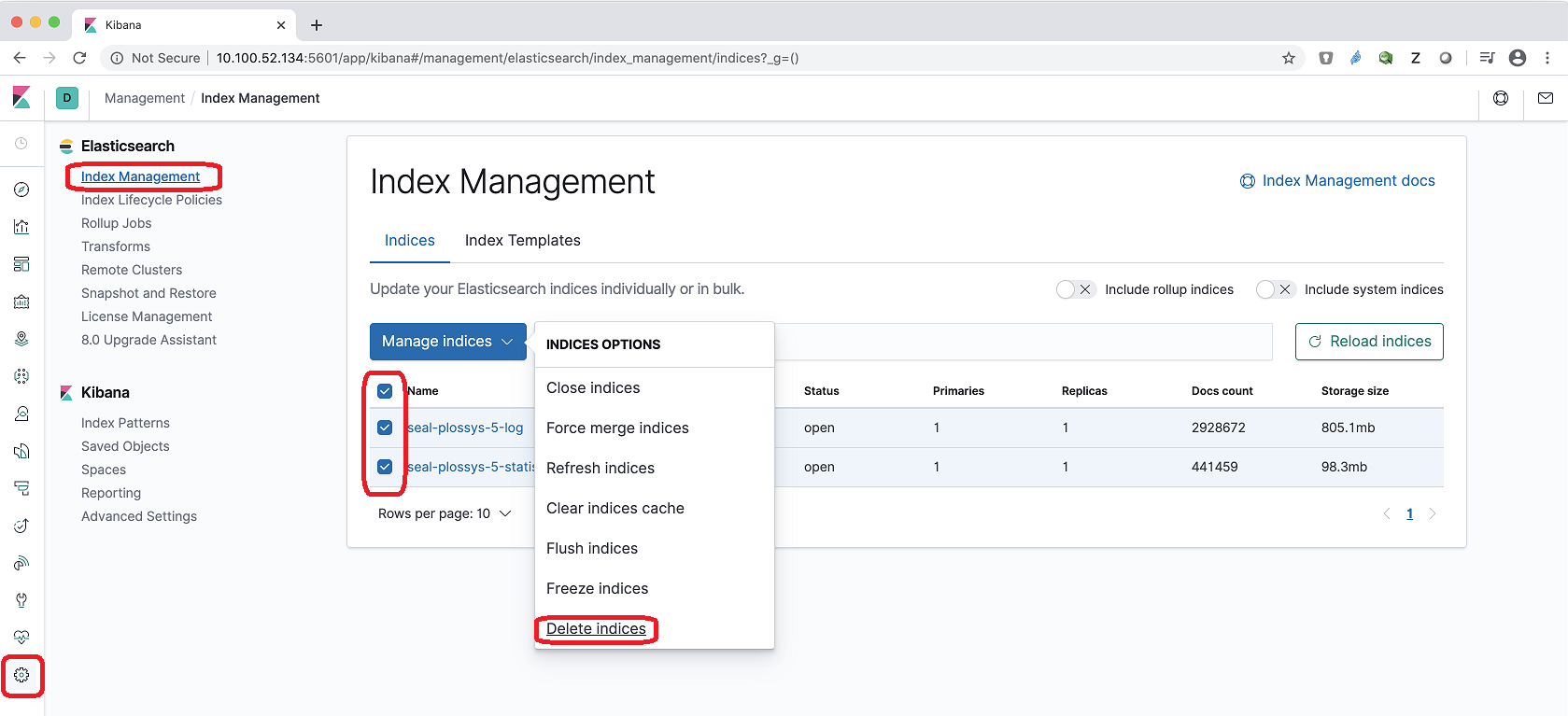
-
Create index lifecycle policies for both indices (
seal-plossys-5-logandseal-plossys-5-statistics) and specify the following settings: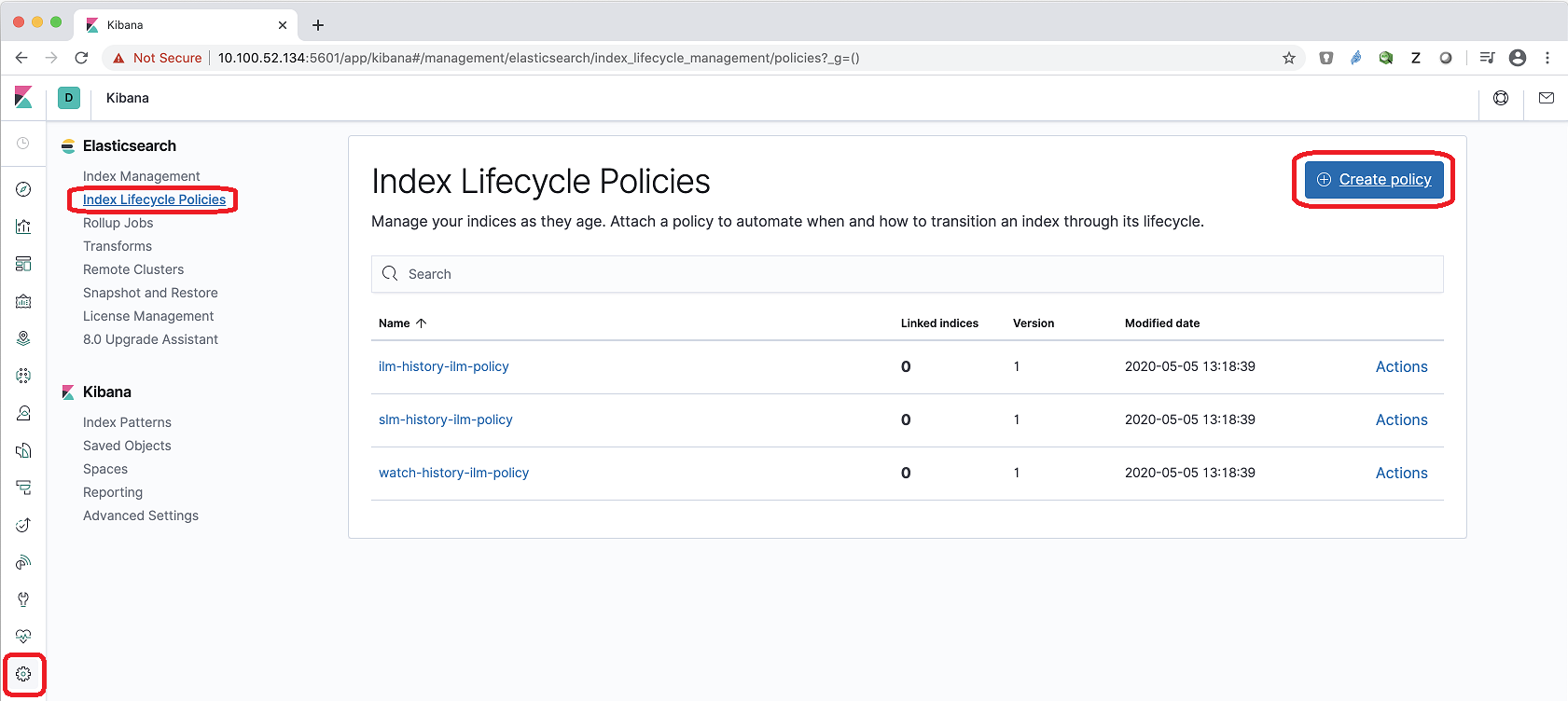
-
In the
Namesection, specifyPolicy name. Although the policy name is arbitrary, we recommend using the same name as for the index (seal-plossys-5-log). -
In the
Hot phasesection, specifyMaximum index size. We recommend 10 GB.
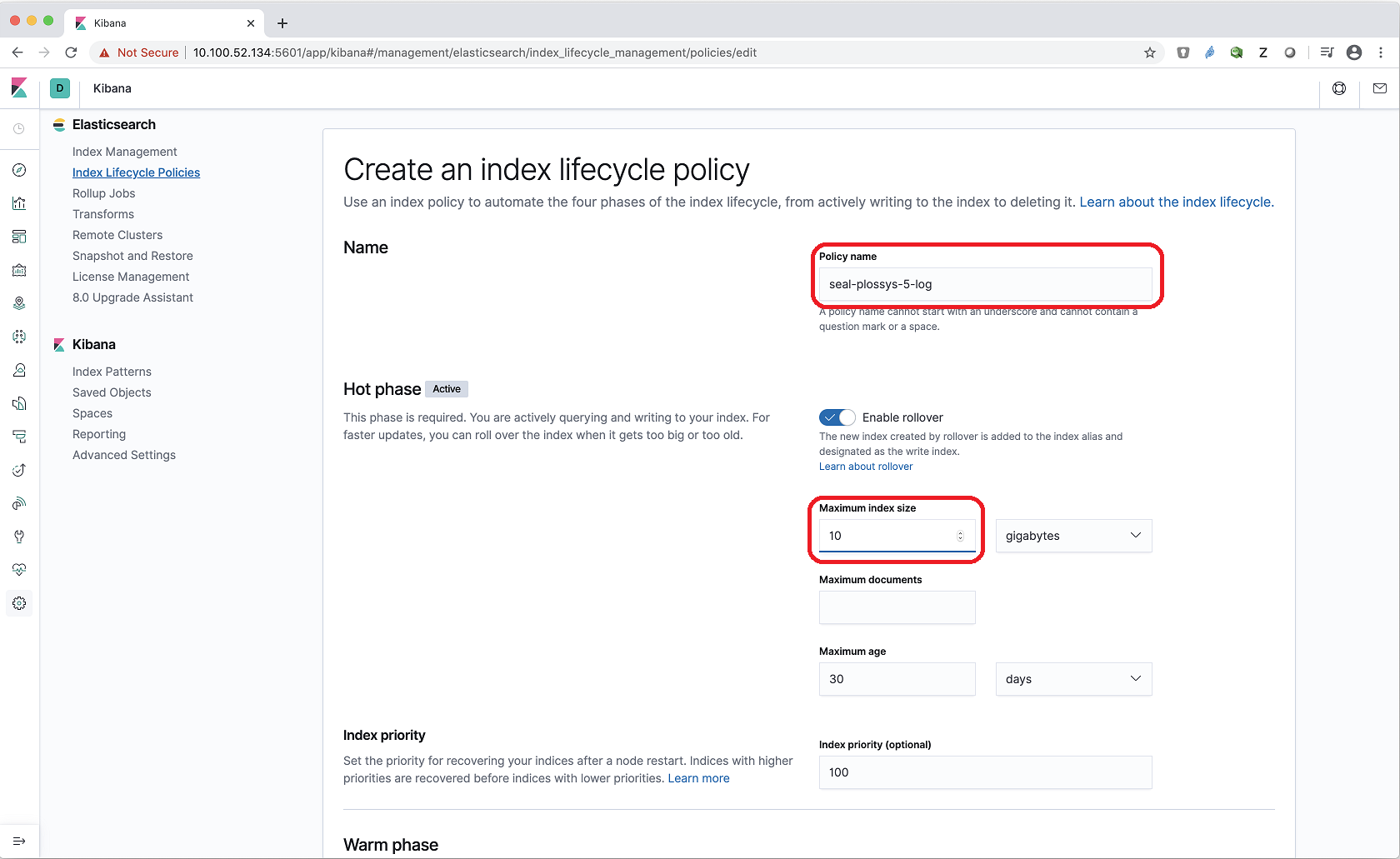
- Switch on
Activate delete phase, and then specifyTiming for delete phasein the activated section. We recommend 7 days.
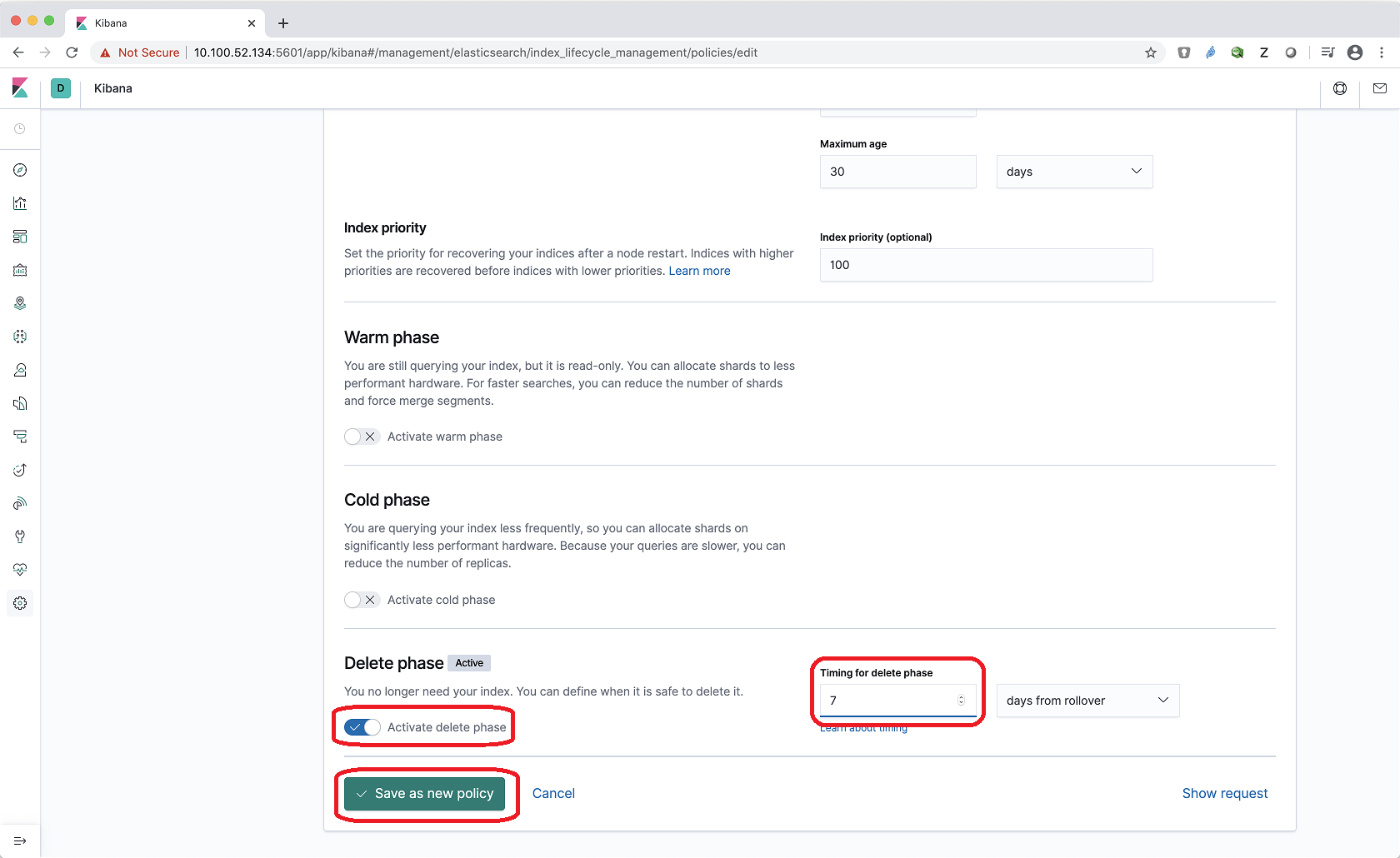
Repeat the steps for
seal-plossys-5-statisticscorrespondingly. -
-
Create index templates for both indices and specify the following settings:
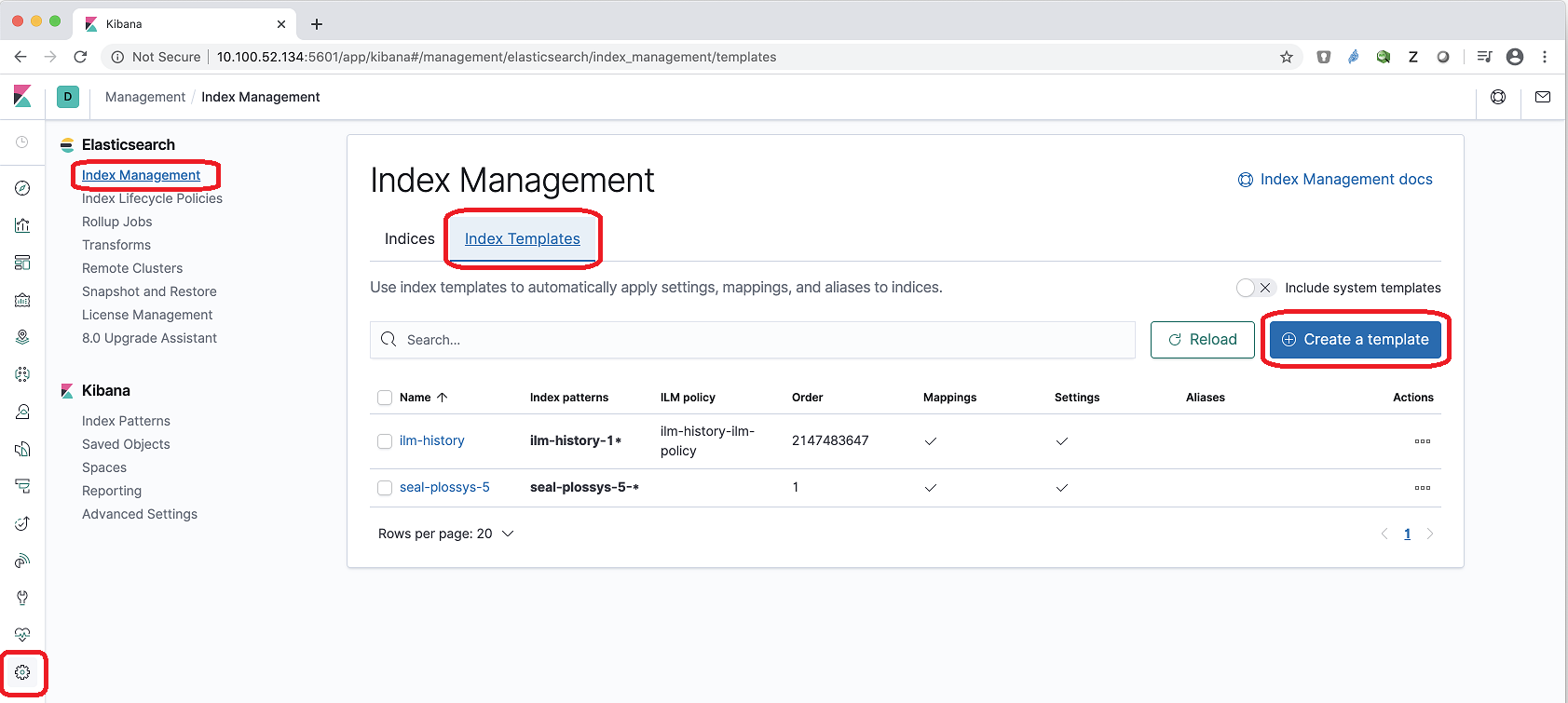
-
In the
Logisticstab, specifyName. We recommend using the same name as for the index (seal-plossys-5-log). -
In
Index patterns, specify the name of the index followed by-*(seal-plossys-5-log-*).
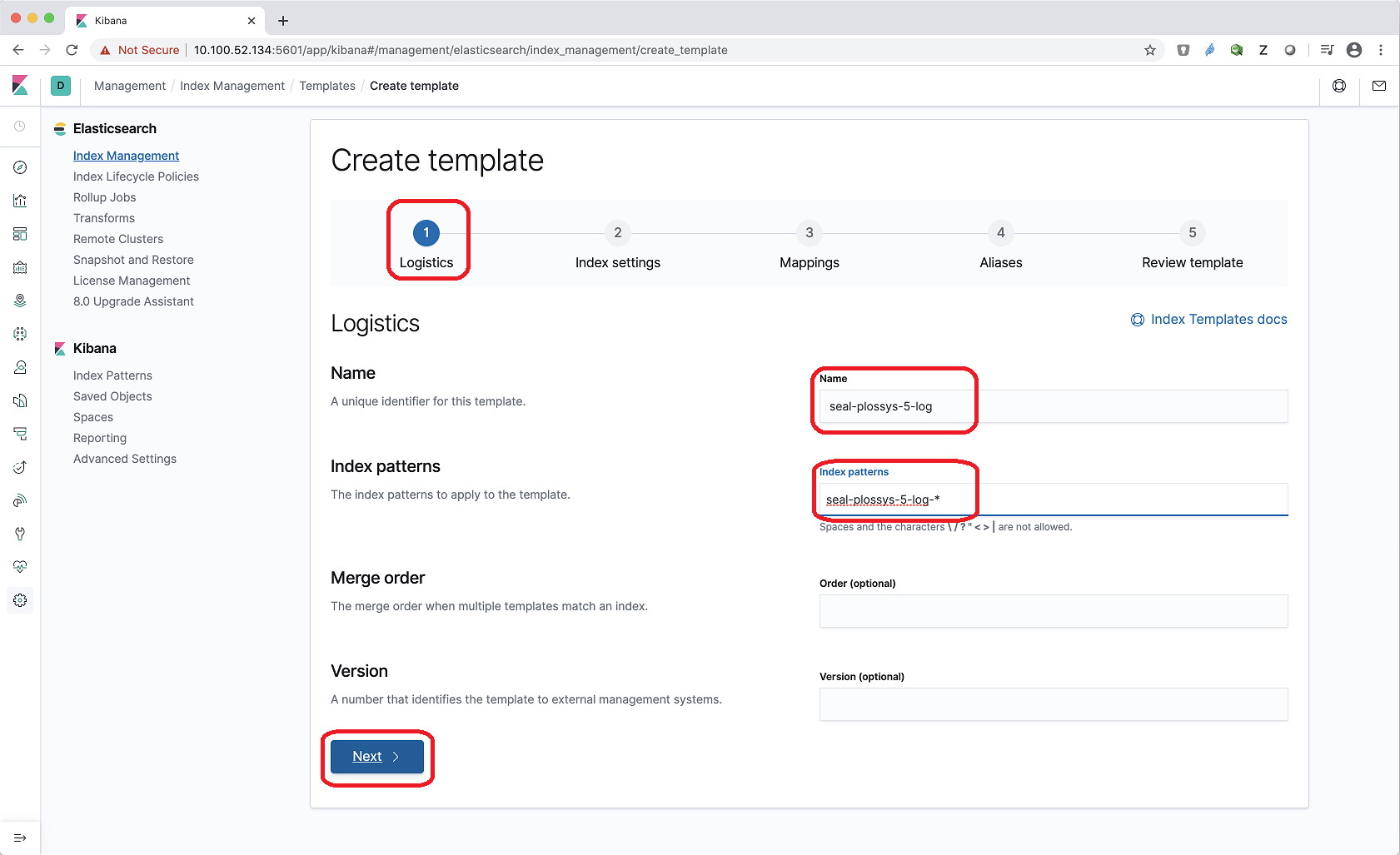
-
In the
Index settingstab, enter the following JSON object:{ "index": { "lifecycle": { "name": "seal-plossys-5-log", "rollover_alias": "seal-plossys-5-log" } } }
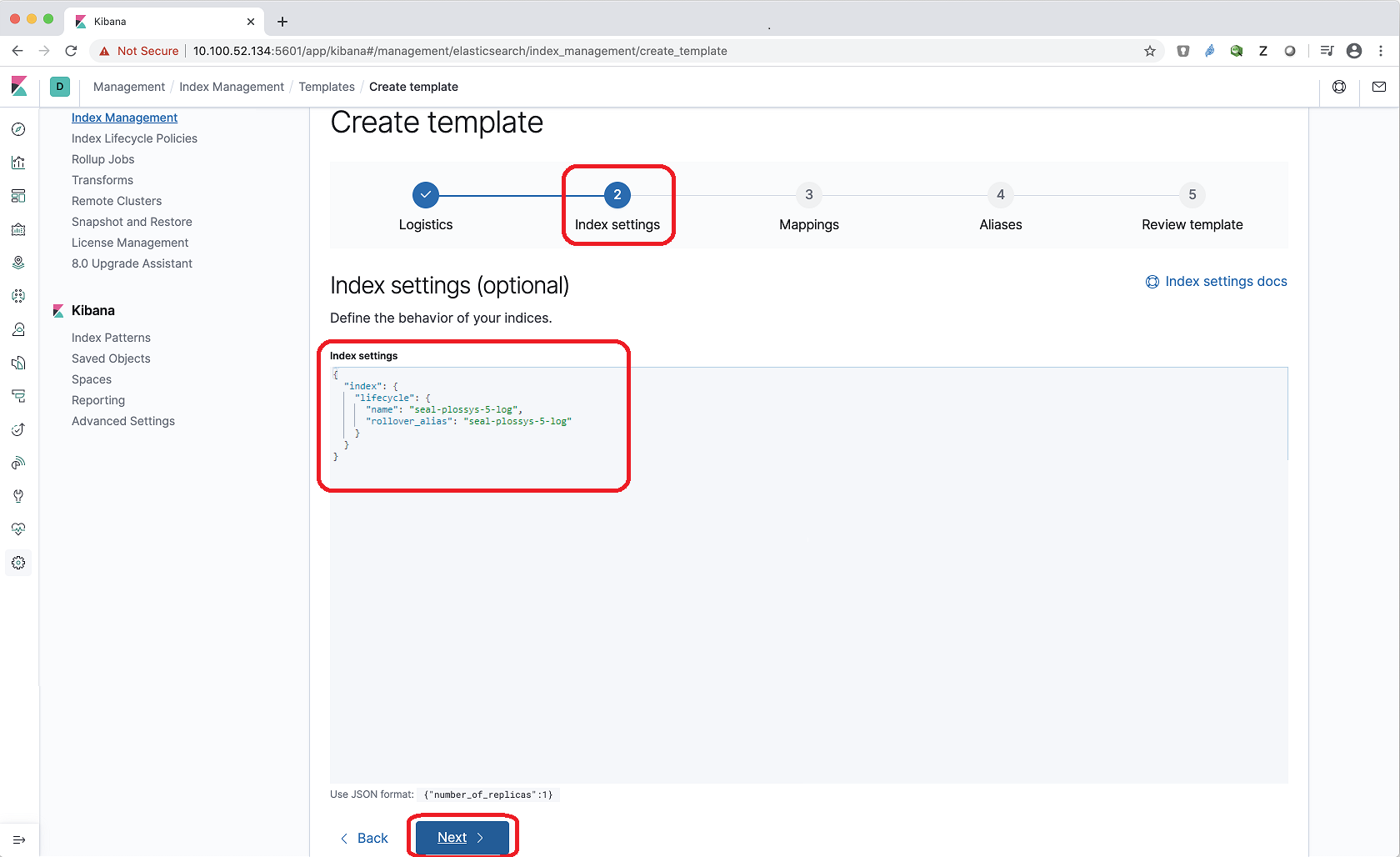
- In the
Mappingstab, nothing has to be specified:
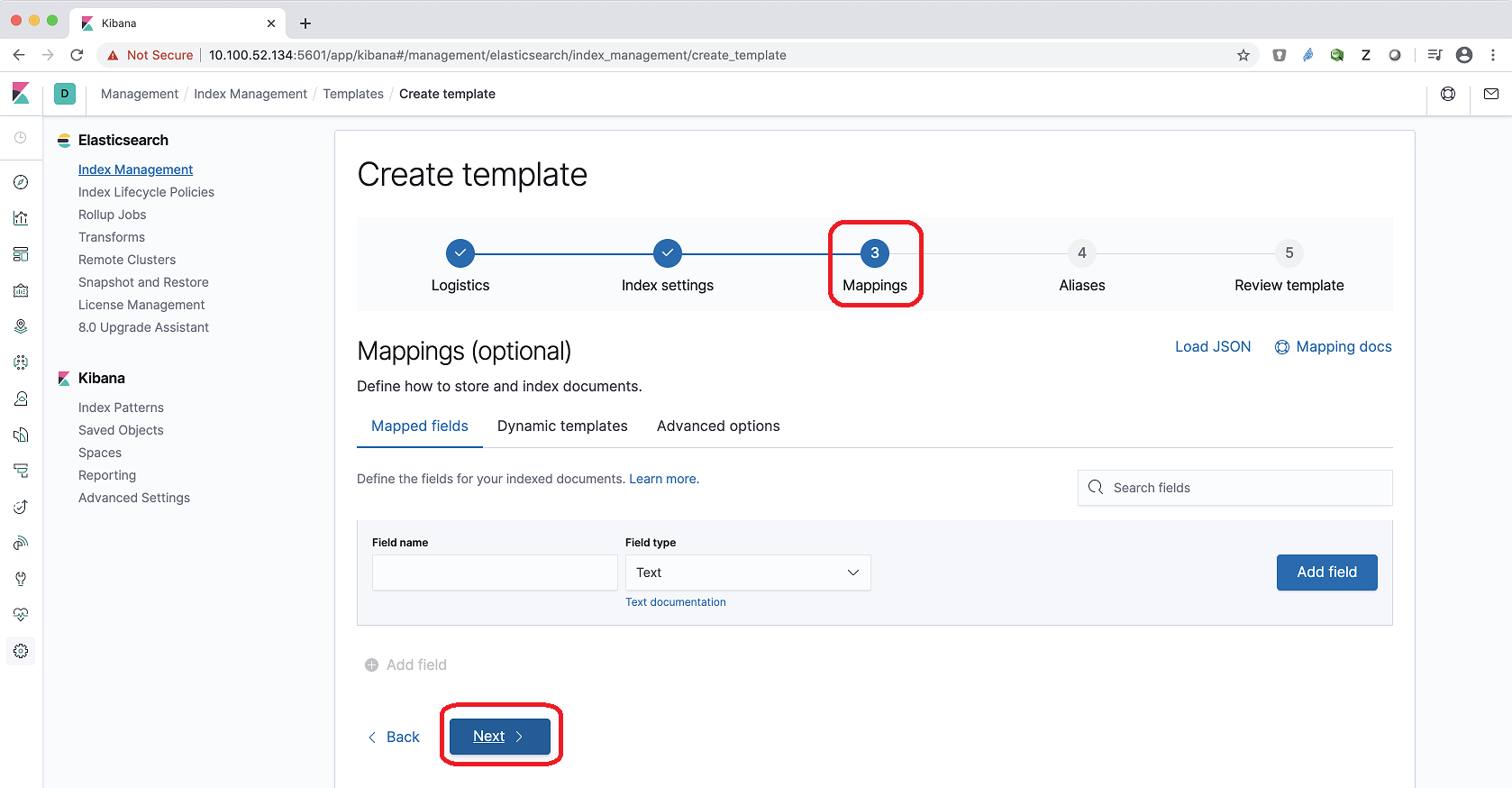
- In the
Aliasestab, nothing has to be specified:
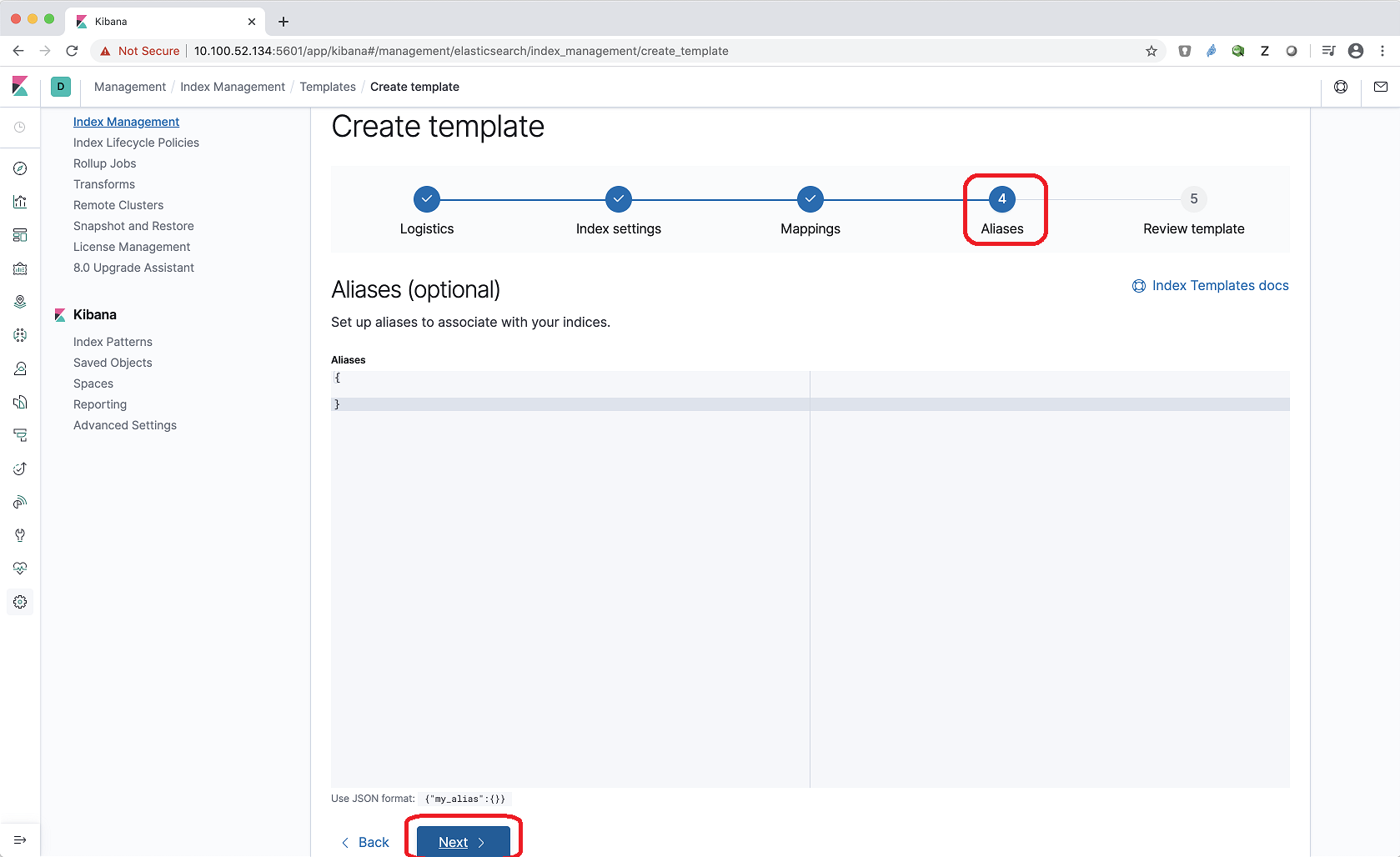
- Click
Create template.
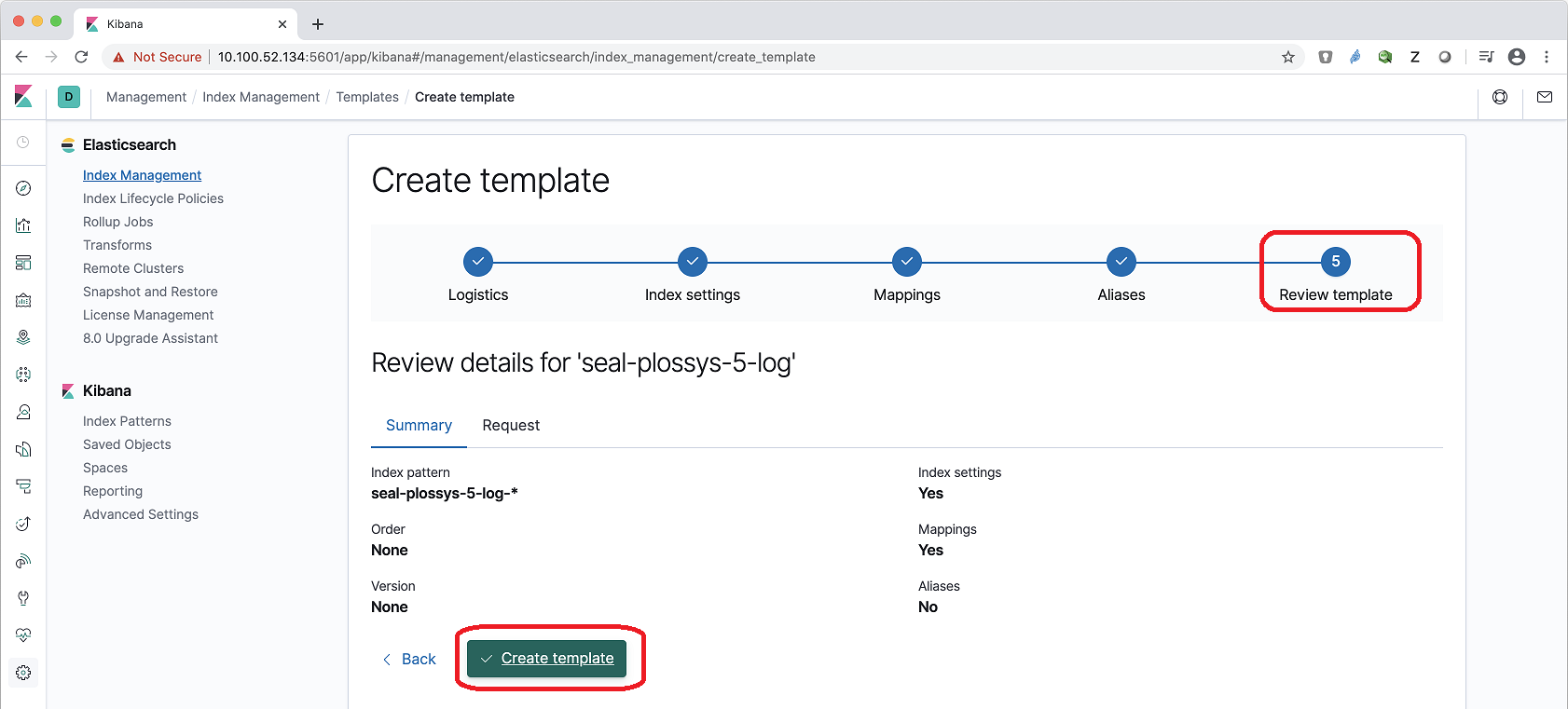
Repeat the steps for
seal-plossys-5-statisticscorrespondingly. -
-
Create write aliases for both indices:
-
In the
Consoletab, enter the following code in the left column and click the arrow button afterwards:PUT seal-plossys-5-log-000001 { "aliases": { "seal-plossys-5-log": { "is_write_index": true } } }
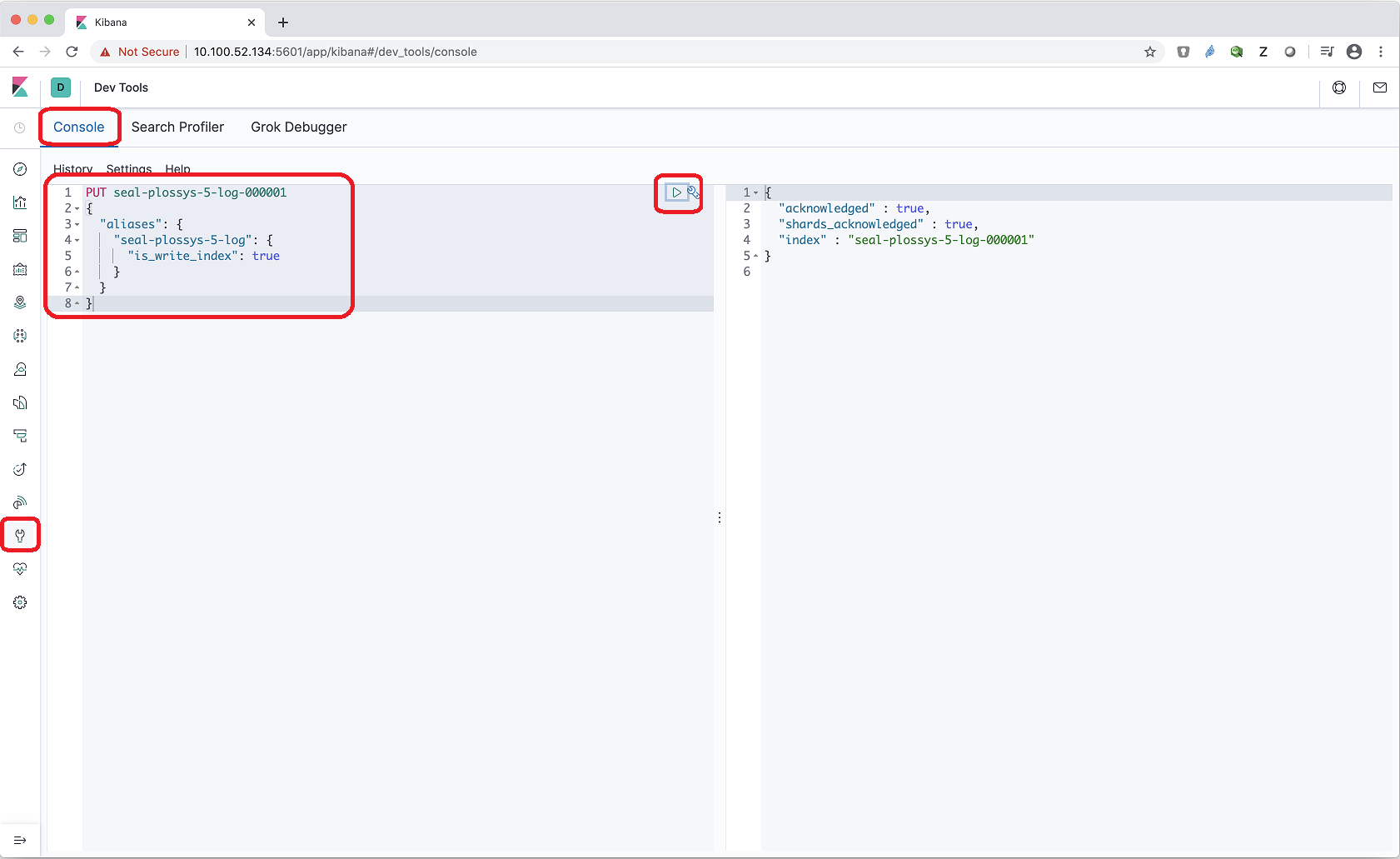
Repeat the step for
seal-plossys-5-statisticscorrespondingly. -
-
Check the list of indices. The
Index Managementlist contains the indices forseal-plossys-5-logandseal-plossys-5-statisticsnow: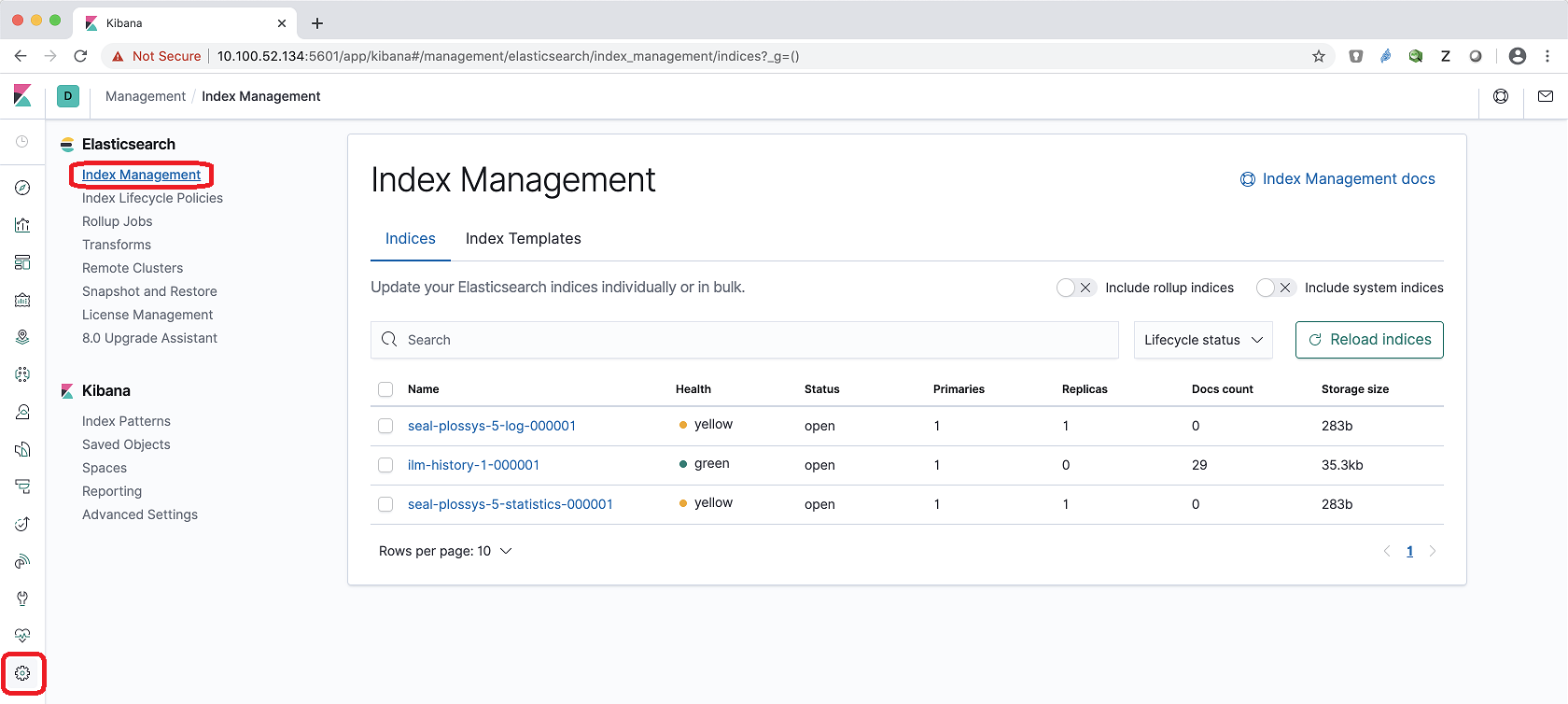
-
Start the
seal-filebeatservices on all PLOSSYS 5 servers (if already installed):plossys service start seal-filebeat
Indices Used in Elasicsearch for PLOSSYS 5¶
The indices used in Elasticsearch for the log and statistics messages of PLOSSYS 5 are specified in the following keys in the PLOSSYS 5 system:
-
ELASTICSEARCH_INDEX_LOG: Index used for the log messages -
ELASTICSEARCH_INDEX_STATISTICS: Index used for the statistics messages